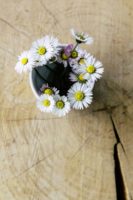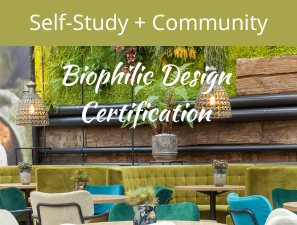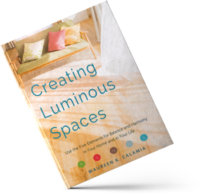(Originally published in October/November 2022 issue of The Journal of Biophilic Design)
 What is a column on spirituality doing in a journal on biophilic design?
What is a column on spirituality doing in a journal on biophilic design?
Pull up a chair.
Most of what we hear on this topic of biophilic design is about the measurable impacts on physical and mental wellbeing. We learn about how nature improves productivity, recovery from surgery, and decreases absenteeism and turnover. We hear mostly about high-end, highly visible corporate and public projects creating biophilic spaces. The emphasis is on how biophilic design can improve the bottom line.
What is Biophilic Design?
But is that what biophilic design is all about?
Not so, when I discovered it back in 2008 while searching the internet. I saw that biophilic design was a modern counterpart to the ancient practice of feng shui. Even Stephen Kellert said as much, when I met with him a few years later at his office at Yale.
“The idea of biophilic design arises from the increasing recognition that the human mind and body evolved in a sensorially-rich world, one that continues to be critical to people’s health, productivity, emotional, intellectual, and even spiritual wellbeing.” Stephen Kellert, Biophilic Design: The Theory, Science, and Practice of Bringing Buildings to Life, p. vii.
Since then, proponents recognized that in order for the practice to become adopted into building, renovation, and re-design projects, the message had to appeal to a corporate, profit-focused audience.
And we are now seeing the consequences. The message has been watered-down. The attributes of biophilic design have been sanitized and stripped of their full meaning and potential to make it more palatable for business. More focused on stats, technology, and products, it’s lost part of its humanity, something that biophilic design was supposed to help cure.
Scientist and social critic, C.P. Snow, is quoted in the 2002 book, The Good in Nature & Humanity: Connecting Science, Religion, and Spirituality, edited by Stephen R. Kellert and Timonthy J. Farnham (p.3)
Science reduces and oversimplifies
Condenses and abstracts, drives toward generality
Presumes to break insoluble
Forgets the spirit
Imprisons the spark of artistic genius.
Science Reduces and Oversimplifies
What was acknowledged in this book, at the early stages of biophilic design’s development, has been forgotten. Science reduces and oversimplifies and loses its heart.
Several sets of biophilic attributes have been created over the years, published first by Kellert and then by others, but there are some elements that seem to have been dropped from the early days.
In his 2008 book, Biophilic Design (p. 15) Kellert’s list includes two attributes that are given little coverage in later guidelines: Placed-Based Relationships and Evolved Human-Nature Relationships. Some of the elements missing are:
• Geographic, historical, ecological, and cultural connection to the land
• Spirit of place
• Curiosity and enticement
• Affection and attachment
• Attraction and beauty
• Exploration and discovery
• Fear and awe
• Reverence and spirituality
Why were they removed from future renditions?
Essentially, I believe it is because these elements were deemed too subjective and not easily measurable, which can make its application a challenge, putting a burden on project teams. And unfortunately, putting a spotlight on spiritual wellbeing is not a goal in most, if any, build projects.
But I do think this is changing.
My work in feng shui has given me a different perspective than most. I discuss spirituality with my clients and see more people than ever talking about their spirituality.
Feng shui’s goal is to create spaces for the whole individual. It acknowledges that our environments impact our thoughts, actions, and behavior. And I am grateful to the environmental research that has been done for the benefit of biophilic design. It also benefits the adoption of feng shui.
In this column, I will share ideas related to these topics. Biophilic design, feng shui, and the pursuit of spiritual wellbeing. How the adoption of biophilic design helps us restore a connection to the natural world. And how this is just the start of recognizing the truth, that we are not separate. We never were. And how our deep relationship to trees, wildlife, weather patterns, and the great landscapes of the earth are a necessary part of our survival.
–> Get Certified with this Online Biophilic Design Course.
LEARN MORE HERE




Reader Interactions